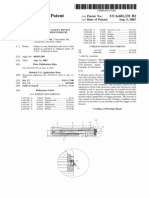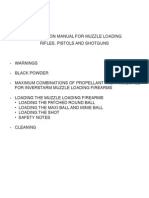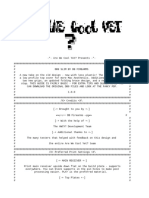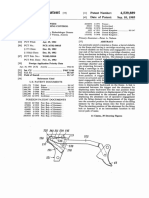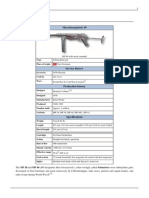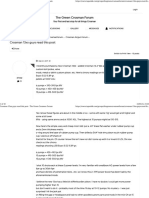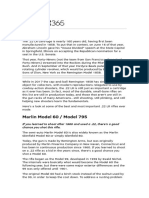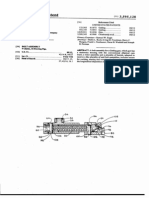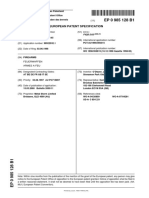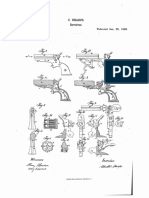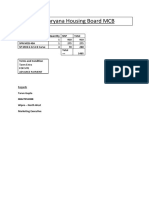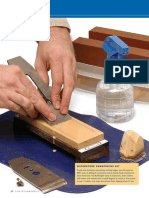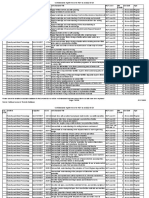0% found this document useful (0 votes)
293 views11 pagesGun Manufacturing
This document describes a method for manufacturing double barrel shotgun barrels from a single piece of elongated solid metal stock material. The key steps include:
1) Forming two spaced apart index holes in both ends of the metal stock material.
2) Forming at least one external guide along the length of the stock material, with each guide spaced at a relative angle.
3) Boring at least one projectile hole through the stock material, defined by the index holes and external guides.
4) Optionally profiling and machining the stock material into the desired barrel profile.
Double barrel shotguns produced using this single-piece method are also described.
Uploaded by
Tarun GuptaCopyright
© Attribution Non-Commercial (BY-NC)
We take content rights seriously. If you suspect this is your content, claim it here.
Available Formats
Download as DOCX, PDF, TXT or read online on Scribd
0% found this document useful (0 votes)
293 views11 pagesGun Manufacturing
This document describes a method for manufacturing double barrel shotgun barrels from a single piece of elongated solid metal stock material. The key steps include:
1) Forming two spaced apart index holes in both ends of the metal stock material.
2) Forming at least one external guide along the length of the stock material, with each guide spaced at a relative angle.
3) Boring at least one projectile hole through the stock material, defined by the index holes and external guides.
4) Optionally profiling and machining the stock material into the desired barrel profile.
Double barrel shotguns produced using this single-piece method are also described.
Uploaded by
Tarun GuptaCopyright
© Attribution Non-Commercial (BY-NC)
We take content rights seriously. If you suspect this is your content, claim it here.
Available Formats
Download as DOCX, PDF, TXT or read online on Scribd
/ 11




